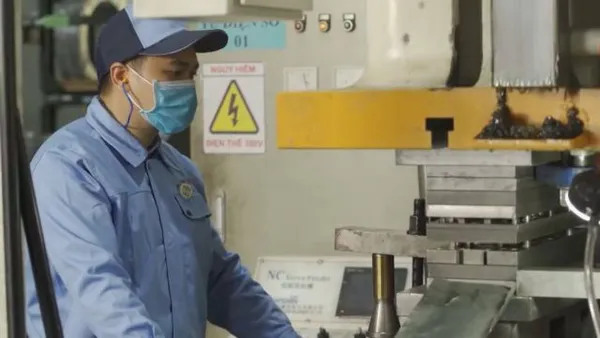 Economy
Economy


|
| The Bàu Trúc pottery village is developing a modern line of pottery products serving the domestic market and export. — VNA/VNS Photo Thanh Hà |
HÀ NỘI — The south-central province of Ninh Thuận spent nearly VNĐ3 billion (US$129,000) to develop local craft villages in a bid to boost rural incomes and build new-style rural areas.
The money will be spent on vocational training, infrastructure building and the formation of cooperatives, while supporting production, environmental treatment and tourism development.
Ninh Thuận also plans to design technical demonstrations, a website for craft villages and help people exhibitions and trade fairs.
To date, the province has three recognised traditional craft villages – Bàu Trúc for pottery, and Mỹ Nghiệp and Chung Mỹ for brocade weaving – in addition to dozens of others working in seafood processing, as well as producing fish sauce, woodwork products, and grape wine. They have so far created thousands of jobs and contributed to the preservation of the culture of the ethnic communities in the locality.
However, many of them have been struggling to survive due to capital and human resources shortage, as well as poor competitiveness.
Some are looking for ways to boost production quality and spur demand in the market.
According to Hàm Minh Thiệu, head of the Chăm Mỹ Nghiệp brocade services and production cooperative, Chăm ethnic people are working to improve their designs and diversity to meet consumers’ demand but still conserve their cultural identity.
The Bàu Trúc pottery village has followed suit by developing a modern line of pottery products serving the domestic market and export.
By 2020, Ninh Thuận aims to have four to five more accredited craft villages, including aquatic processing one in Mỹ Tân and a fish sauce village in Cà Ná commune. — VNS